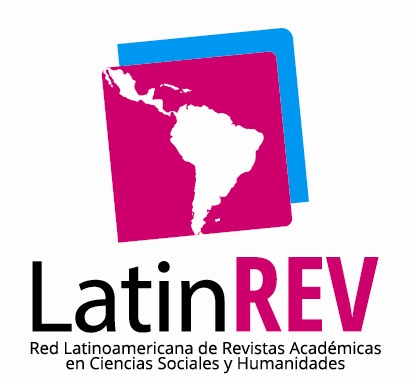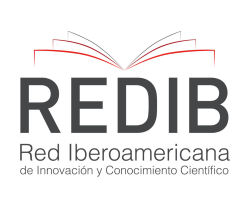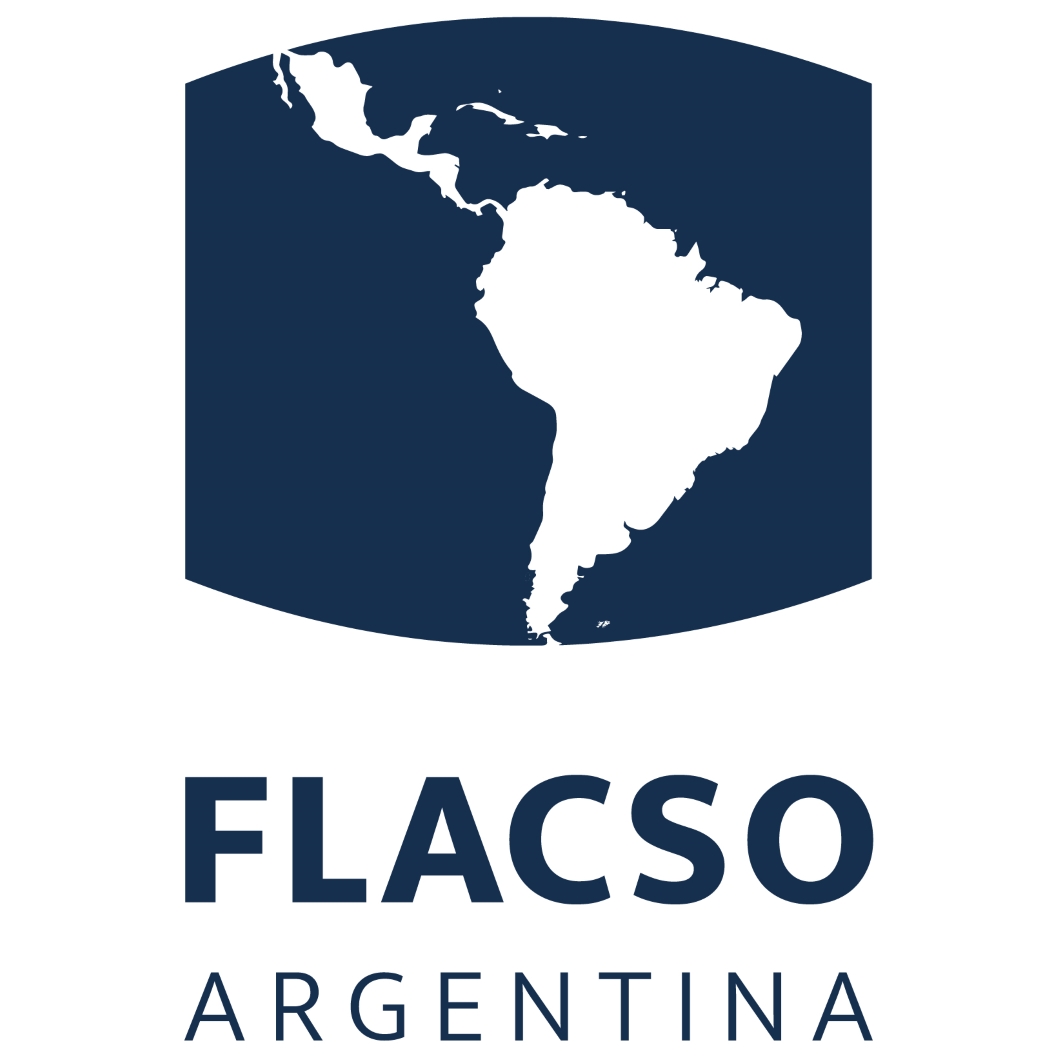Efecto de los factores climáticos en la propagación del dengue, zika y chikunguña, transmitidas por el mosquito Aedes spp. en Sudamérica: una revisión sistemática
Resumen
La alta incidencia de arbovirosis transmitidas por mosquitos del género Aedes spp. representa un desafío significativo para la salud pública. En Sudamérica, las condiciones climáticas favorecen la proliferación y expansión de vectores, complicando la respuesta de los sistemas de salud ante los brotes. Como objetivo, se analizó el efecto de los factores climáticos en la propagación del dengue, zika y chikunguña, así como las estrategias implementadas para su control en Sudamérica. Se realizó una revisión sistemática siguiendo el protocolo PRISMA. Se seleccionaron artículos publicados entre 2019 y 2024 en las bases de datos de “PubMed”, “Scopus”, “ProQuest”, “SciELO” y “LILACS”, identificando 142 artículos. Los resultados exponen que el cambio climático, sumado a fenómenos como El Niño, ha alterado factores climáticos, expandiendo las áreas de riesgo y favoreciendo la reproducción del mosquito. Se concluye que es crucial adoptar una respuesta multidisciplinaria para enfrentar los desafíos que el cambio climático impone sobre la salud pública en Sudamérica, donde medidas físicas, químicas y biológicas han demostrado efectividad, pero son insuficientes frente a la expansión de zonas afectadas y la variabilidad climática. Además, se evidencia un vacío en la investigación sobre la interacción entre factores climáticos y los procesos biológicos de los virus.
Descargas
Citas
Abdullah, N. A. M. H., Dom, N. C., Salleh, S. A., Salim, H., & Precha, N. (2022). The association between dengue case and climate: A systematic review and meta-analysis. One Health, 15, 100452. https://doi.org/https://doi.org/10.1016/j.onehlt.2022.100452
Abel Mangueira, F. F., Smania-Marques, R., Dutra Fernandes, I., Alves Albino, V., Olinda, R., Santos-Silva, T. A., Traxler, J., Matheson, D., & Santos, S. (2019). The prevention of arboviral diseases using mobile devices: a preliminary study of the attitudes and behaviour change produced by educational interventions. Trop Med Int Health, 24(12), 1411–1426. https://doi.org/10.1111/tmi.13316
Aguirre, E., Andreo, V., Porcasi, X., Lopez, L., Guzman, C., González, P., & Scavuzzo, C. M. (2021). Implementation of a proactive system to monitor Aedes aegypti populations using open access historical and forecasted meteorological data. Ecological Informatics, 64. https://doi.org/10.1016/j.ecoinf.2021.101351
Albuquerque, M. V. de, Pepe, V. L. E., Reis, L. G. da C., Oliveira, C. V. dos S., Cunha, A. de A. G. da, & Dias, H. (2024). Respostas do sistema de saúde brasileiro à emergência do Zika vírus: as distintas estratégias adotadas pelos estados do Ceará e do Rio de Janeiro. Physis (Rio J.), 34, e34SP106-e34SP106. https://doi.org/10.1590/s0103-7331202434sp106pt
Alencar, J., Ferreira de Mello, C., Silva, S. O. F., Guimarães, A. É., & Müller, G. A. (2022). Effects of seasonality on the oviposition activity of potential vector mosquitoes (Diptera: Culicidae) from the São João River Basin Environmental Protection Area of the state of Rio de Janeiro, Brazil. European Zoological Journal, 89(1), 1018–1025. https://doi.org/10.1080/24750263.2022.2108513
Alonso, A. C., Stein, M., Matías Hisgen, C., & Micieli, M. V. (2022). Abiotic factors affecting the prevalence of Wolbachia (Rickettsiaceae) in immature Aedes albopictus (Skuse) (Culicidae). Journal of Invertebrate Pathology, 189. https://doi.org/10.1016/j.jip.2022.107730
Andreo, V., Porcasi, X., Guzman, C., López, L., Lopez, L., & Scavuzzo, C. M. (2021). Spatial Distribution of Aedes aegypti Oviposition Temporal Patterns and Their Relationship with Environment and Dengue Incidence. https://doi.org/10.3390/insects12100919
Angelo, M., Ramalho, W. M., Gurgel, H., Belle, N., & Pilot, E. (2020). Dengue surveillance system in Brazil: A qualitative study in the federal district. International Journal of Environmental Research and Public Health, 17(6). https://doi.org/10.3390/ijerph17062062
Arcanjo, D. B. M. C., Vidal, P. O., Santos, J. Y. G. dos, Venancio, L. P. R., Suesdek, L., & Amorim, J. H. (2020). Geometric morphometrics of Aedes aegypti populations and study of transmission of arboviral diseases in Barreiras, Brazil. Rev. Bras. Entomol, 64(1), e201960–e201960. https://doi.org/10.1590/1806-9665-rbent-2019-60
Arduino, M. de B., Mucci, L. F., Santos, L. M. Dos, & Soares, M. F. de S. (2020). Importance of microenvironment to arbovirus vector distribution in an urban area, São Paulo, Brazil. Rev Soc Bras Med Trop, 53, e20190504–e20190504. https://doi.org/10.1590/0037-8682-0504-2019
Ariza Abril, J. S., Rivillas García, J. C., Cifuentes, Á. M., Calderón Jaramillo, M., & Rivera, D. (2020). Uso de servicios de salud y enfermedades transmisibles de la población migrante y refugiada venezolana. Salud UIS, 52(4). https://doi.org/10.18273/revsal.v52n4-2020006
Ávalos, A. N., Miño, M. H., Anacoreto, N. S., & Burroni, N. E. (2023). Characterization of the mosquito community in diurnal activity in an urban ecological reserve. Revista de La Sociedad Entomologica Argentina, 82(2), 11–21. https://doi.org/10.25085/rsea.820202
Barbosa, A. de M., & Veronezi, R. J. B. (2023). Dengue control in the State of Goiás-Brazil using “wMel Wolbachia”: a cost-effectiveness study. Rev. Cient. Esc. Estadual Saúde Pública de Goiás Cândido Santiago, 9, 9f5-9f5. https://doi.org/10.22491/2447-3405.2023.V9.9f5
Barbosa, G. L., Alves Gomes, A. H., & de Camargo-Neves, V. L. F. (2023). The SisaMob Information System: Implementation of Digital Data Collection as a Tool for Surveillance and Vector Control in the State of São Paulo. Insects, 14(4). https://doi.org/10.3390/insects14040380
Barcellos Madeira, R., Tamanini Silva Moschen, H., Loss, A., da Silva, C., Brioschi Dos Santos, A., Caetano Pimenta, B., Nunes Zordan, J., Cerutti Junior, C., Espinosa Barbosa, M., Drumond Louro, I., Dummer Meira, D., & Vicente, C. (2024). Climate change impacts on dengue transmission areas in Espírito Santo state, Brazil. Oxf Open Immunol, 5(1), iqae011-. https://doi.org/10.1093/oxfimm/iqae011
Barreto, E., Resende, M. C., Eiras, A. E., & Demarco Júnior, P. C. (2020). Evaluation of the baited ovitrap with natural attractant for monitoring aedes spp. In dili, capital of east timor. Ciencia e Saude Coletiva, 25(2), 665–672. https://doi.org/10.1590/1413-81232020252.12512018
Barrios-Rivera, E., Vasilieva, O., & Svinin, M. (2023). Optimal Control of a Two-Patch Dengue Epidemic under Limited Resources. MATHEMATICS, 11(18). https://doi.org/10.3390/math11183921
Bastos, A., Leite, P., Dos Santos-Mallet, J., de Mello CF, Serdeiro, M., Dos Silva, J., Figueiró, R., Docile, T., & Alencar, J. (2021). Spawning behavior of Aedini (Diptera: Culicidae) in a remnant of Atlantic Forest in the state of Rio de Janeiro. Parasit Vectors, 14(1), 591-. https://doi.org/10.1186/s13071-021-05102-9
Batista Figueredo, M., Souza Monteiro, R. L., do Nascimento Silva, A., de Araújo Fontoura, J. R., da Silva Andreia Rita, & Pererira Alves, C. A. (2023). Analysis of the correlation between climatic variables and Dengue cases in the city of Alagoinhas/BA. Sci Rep, 13(1), 7512-. https://doi.org/10.1038/s41598-023-34349-8
Bavia, L., Melanda, F. N., de Arruda, T., Mosimann, A. L., Silveira, G., Aoki, M., Kuczera, D., Sarzi, M., Junior, W., Conchon-Costa, I., Pavanelli, W., Duarte Dos Santos, C., Barreto, R., & Bordignon, J. (2020). Epidemiological study on dengue in southern Brazil under the perspective of climate and poverty. Sci Rep, 10(1), 2127-. https://doi.org/10.1038/s41598-020-58542-1
Benítez, Y. M., Benitez, Y. M., Cortés, K. J. M., Montenegro, E. G. M., García, V. H. P., Monroy-Díaz, Á. L., Díaz, Á. L. M., & Díaz, A. L. M. (2019). Influencia de la temperatura ambiental en el mosquito Aedes spp y la transmisión del virus del dengue. https://doi.org/10.21615/cesmedicina.33.1.5
Betancourt, M. I. F., López Domínguez, D. M., Rodríguez, J. V., & Garrido, A. S. (2021). Public health in pluricultural contexts. Advances and setbacks. In Boletin de Malariologia y Salud Ambiental (Vol. 61, Issue 4, pp. 548–555). Instituto de Altos Estudios de Salud Publica. https://doi.org/10.52808/bmsa.7e5.614.002
Brady, O. J., & Hay, S. I. (2020). The global expansion of dengue: How aedes aegypti mosquitoes enabled the first pandemic arbovirus. Annual Review of Entomology, 65, 191–208. https://doi.org/10.1146/ANNUREV-ENTO-011019-024918
Brunkard, J. M., Cifuentes, E., & Rothenberg, S. (2008). Assessing the roles of temperature, precipitation, and ENSO in dengue re-emergence on the Texas-Mexico border region. 50, 227–234. http://climvis.ncdc.noaa.gov/cgi-bin/gsod_xmgr
Byttebier, B., Loetti, V., De Majo, M. S., & Fischer, S. (2024). Temporal dynamics of the egg bank of Aedes aegypti (Diptera: Culicidae) in the winter-spring transition in a temperate region. Acta Tropica, 255. https://doi.org/10.1016/j.actatropica.2024.107227
Cabrera, F. (2016). ¿Cómo evitar las enfermedades que trae el fenómeno del niño? https://www.hospitalvernaza.med.ec/blog/item/1041-como-evitar-enfermedades-trae-fenomeno-nino
Caldwell, J. M., LaBeaud, A. D., Lambin, E. F., Stewart-Ibarra, A. M., Ndenga, B. A., Mutuku, F. M., Krystosik, A. R., Ayala, E. B., Anyamba, A., Borbor-Cordova, M. J., Damoah, R., Grossi-Soyster, E. N., Heras, F. H., Ngugi, H. N., Ryan, S. J., Shah, M. M., Sippy, R., & Mordecai, E. A. (2021). Climate predicts geographic and temporal variation in mosquito-borne disease dynamics on two continents. BioRxiv. https://doi.org/10.1101/2020.02.07.938720
Camargo, C., Alfonso-Parra, C., Díaz, S., Rincon, D., Ramírez-Sánchez, L., Agudelo, J., Barrientos, L., Villa-Arias, S., & Avila, F. (2021). Spatial and temporal population dynamics of male and female Aedes albopictus at a local scale in Medellín, Colombia. Parasit Vectors, 14(1), 312-. https://doi.org/10.1186/s13071-021-04806-2
Cano-Pérez, E., Loyola, S., Malambo-García, D., & Gómez-Camargo, D. (2022). Climatic factors and the incidence of dengue in Cartagena, Colombian Caribbean Region. Rev Soc Bras Med Trop, 55, e00722022-. https://doi.org/10.1590/0037-8682-0072-2022
Cantillo-Barraza, O., Medina, M., Granada, Y., Muñoz, C., Valverde, C., Cely, F., Gonzalez, P., Mendoza, Y., Zuluaga, S., & Triana-Chávez, O. (2020). Susceptibility to Insecticides and Natural Infection in Aedes aegypti: An Initiative to Improve the Mosquito Control Actions in Boyacá, Colombia. Ann Glob Health, 86(1), 94-. https://doi.org/10.5334/aogh.2805
Cardenas, R., Hussain-Alkhateeb, L., Benitez-Valladares, D., Sánchez-Tejeda, G., & Kroeger, A. (2022). The Early Warning and Response System (EWARS-TDR) for dengue outbreaks: can it also be applied to chikungunya and Zika outbreak warning? BMC Infectious Diseases, 22(1). https://doi.org/10.1186/s12879-022-07197-6
Carrasquilla, M. C., Ortiz, M. I., León, C., Rondón, S., Kulkarni, M. A., Talbot, B., Sander, B., Vásquez, H., Cordovez, J. M., González, C., Sander, B., Kulkarni, M. A., Wu, J., González, C., Miretti, M., Espinel, M., Cevallos, V., & Team, R.-L. R. (2021). Entomological characterization of Aedes mosquitoes and arbovirus detection in Ibagué, a Colombian city with co-circulation of Zika, dengue and chikungunya viruses. Parasites & Vectors, 14(1), 446. https://doi.org/10.1186/s13071-021-04908-x
Castilho de Arruda, L. D., Giovanetti, M., Fonseca, V., Zardin, M. C. S. U., Lichs, G. G. de C., Asato, S., Esposito, A. O. P., Tokeshi Müller, M., Xavier, J., Fritsch, H., Lima, M., de Oliveira, C., Santos, E. V., Maziero, L. de M. A., Frias, D. F. R., das Neves, D., da Silva, L., Rodrigues Barretos, E. C., Tsuha Oshiro, P. E., … Cavalheiro Maymone Gonçalves, C. (2023). Dengue Fever Surveillance in Mato Grosso do Sul: Insights from Genomic Analysis and Implications for Public Health Strategies. Viruses, 15(9). https://doi.org/10.3390/v15091790
Cavalcante, A. C. P., de Olinda, R. A., Gomes, A., Traxler, J., Smith, M., & Santos, S. (2020). Spatial modelling of the infestation indices of Aedes aegypti: an innovative strategy for vector control actions in developing countries. Parasit Vectors, 13(1), 197. https://doi.org/10.1186/s13071-020-04070-w
Chamba-Tandazo, J., & Rojas, M. C. (2024). Factores determinantes en la prevención y control del vector Aedes aegypti en el cantón Catamayo provincia de Loja. https://192.188.49.17/jspui/handle/123456789/28809
Coelho, P., Batista, J. V., & Profeta, Z. (2023). Relevância das redes sociais na mobilização social para o enfrentamento de arboviroses no Município de Betim, Minas Gerais, Brasil. Cad. Saúde Pública (Online), 39(7), e00214722–e00214722. https://doi.org/10.1590/0102-311xpt214722
Collischonn, E., Maio, B. M., & Brandolt, R. (2019). Variability of climate and dengue fever cases in porto alegre/rs from 2012 to 2017. Revista Brasileira de Geografia Fisica, 12(6), 2080–2090. https://doi.org/10.26848/rbgf.v12.6.p2080-2090
Contreras-Julio, D., Aguirre, P., Mujica, J., & Vasilieva, O. (2020). Finding Strategies to Regulate Propagation and Containment of Dengue via Invariant Manifold Analysis. SIAM JOURNAL ON APPLIED DYNAMICAL SYSTEMS, 19(2), 1392–1437. https://doi.org/10.1137/20M131299X
Couper, L., Farner, J., Caldwell, J., Childs, M., Harris, M., Kirk, D., Nova, N., Shocket, M., Skinner, E., Uricchio, L., Exposito-Alonso, M., & Mordecai, E. (2021). How will mosquitoes adapt to climate warming? Elife, 10. https://doi.org/10.7554/eLife.69630
Custódio, J. M. de O., Nogueira, L. M. S., Souza, D. A., Fernandes, M. F., Oshiro, E. T., Oliveira, E. F. de, Piranda, E. M., & Oliveira, A. G. de. (2019). Abiotic factors and population dynamic of Aedes aegypti and Aedes albopictus in an endemic area of dengue in Brazil. Rev Inst Med Trop Sao Paulo, 61, e18–e18. https://doi.org/10.1590/S1678-9946201961018
da Silva, W. C., Rodrigues da Silva, J. A., Rebeldo Silva, É. B., de Moraes Sales, R., Silva Araújo, L. J., Pereira dos Santos, M. R., Corrêa Barbosa, A. V., & Colares Camargo Júnior, R. N. (2021). Correlation of dengue cases and pluviometric precipitation, in Pará state, Brazil (2014 to 2019). Revista Brasileira de Geografia Fisica, 14(6), 3608–3621. https://doi.org/10.26848/RBGF.V14.6.P3608-3621
da Silveira, L. T. C., Tura, B., & Santos, M. (2019). Systematic review of dengue vaccine efficacy. BMC Infect Dis, 19(1), 750. https://doi.org/10.1186/s12879-019-4369-5
de Azevedo, T. S., Lorenz, C., & Chiaravalloti-Neto, F. (2020). Spatiotemporal evolution of dengue outbreaks in Brazil. Trans R Soc Trop Med Hyg, 114(8), 593–602. https://doi.org/10.1093/trstmh/traa030
de Castro Poncio, L., Dos Anjos, F. A., de Oliveira, D. A., Rebechi, D., de Oliveira, R. N., Chitolina, R. F., Fermino, M. L., Bernardes, L. G., Guimarães, D., Lemos, P. A., Silva, M. N. E., Silvestre, R. G. M., Bernardes, E. S., & Paldi, N. (2021). Novel Sterile Insect Technology Program Results in Suppression of a Field Mosquito Population and Subsequently to Reduced Incidence of Dengue. J Infect Dis, 224(6), 1005–1014. https://doi.org/10.1093/infdis/jiab049
de Jesus, C. P., Dias, F. B. S., Villela, D. M. A., & Maciel-de-Freitas, R. (2020). Ovitraps Provide a Reliable Estimate of Wolbachia Frequency during wMelBr Strain Deployment in a Geographically Isolated Aedes aegypti Population. INSECTS, 11(2). https://doi.org/10.3390/insects11020092
De Majo, M. S., Zanotti, G., Gimenez, J. O., Campos, R. E., & Fischer, S. (2021). Comparative Study on the Thermal Performance of Three Aedes aegypti (Diptera: Culicidae) Populations From Argentina. J Med Entomol, 58(4), 1733–1739. https://doi.org/10.1093/jme/tjab017
de Melo Moura, M. C. B., Vidal de Oliveira, J., Moreira Pedreira, R., de Medeiros Tavares, A., Araujo de Souza, T., Costa de Lima, K., & Ribeiro Barbosa, I. (2020). Spatio-temporal dynamics of Aedes aegypti and Aedes albopictus oviposition in an urban area of northeastern Brazil. Trop Med Int Health, 25(12), 1510–1521. https://doi.org/10.1111/tmi.13491
de Souza, S. J. P., de Camargo Guaraldo, A., Honório, N. A., Câmara, D. C. P., Sukow, N. M., Machado, S. T., dos Santos, C. N., & da Costa-Ribeiro, M. C. V. (2022). Spatial and Temporal Distribution of Aedes aegypti and Aedes albopictus Oviposition on the Coast of Paraná, Brazil, a Recent Area of Dengue Virus Transmission. Tropical Medicine and Infectious Disease, 7(9). https://doi.org/10.3390/tropicalmed7090246
Diz, J. B. M., Duarte, B. S., Andrade, M. C. N. de, Vieira, A. V., Amaral, M. R., Barreto, L. M. L., Silva, M. H. S. da, Santos Júnior, A. O. dos, Oliviera, D. M. de, & Campos, J. M. (2024). Monitoramento de vetores do gênero Aedes durante o inverno no município de Barbacena, Minas Gerais, Brasil ¬ 2018. J. Health Biol. Sci. (Online), 12(1), 1–7. https://doi.org/10.12662/2317-3076jhbs.v12i1.5105.p1-7.2024
do Nascimento, J. F., Palioto-Pescim, G. F., Pescim, R. R., Suganuma, M. S., Zequi, J. A. C., & Golias, H. C. (2022). Influence of abiotic factors on the oviposition of Aedes (Stegomyia) aegypti (Diptera: Culicidae) in Northern Paraná, Brazil. International Journal of Tropical Insect Science, 42(3), 2215–2220. https://doi.org/10.1007/s42690-022-00742-5
Dos Reis, I. C., Gibson, G., Ayllón, T., de Medeiros Tavares, A., de Araújo, J. M. G., da Silva Monteiro, E., Rodrigues Aguiar, A., de Oliveira, J. V., de Paiva, A. A. P., Wana Bezerra Pereira, H., Dantas Monteiro, J., Sá Carvalho, M., Sabroza, P. C., & Alves Honório, N. (2019). Entomo-virological surveillance strategy for dengue, Zika and chikungunya arboviruses in field-caught Aedes mosquitoes in an endemic urban area of the Northeast of Brazil. Acta Trop, 197, 105061. https://doi.org/10.1016/j.actatropica.2019.105061
Dostal, T., Meisner, J., Munayco, C., García, P., Cárcamo, C., Pérez Lu, J. E., Morin, C., Frisbie, L., & Rabinowitz, P. (2022). The effect of weather and climate on dengue outbreak risk in Peru, 2000-2018: A time-series analysis. PLoS Negl Trop Dis, 16(6), e0010479-. https://doi.org/10.1371/journal.pntd.0010479
Duarte, J. L., Diaz-Quijano, F. A., Batista, A. C., & Giatti, L. L. (2019). Climatic variables associated with dengue incidence in a city of the Western Brazilian Amazon region. Rev Soc Bras Med Trop, 52, e20180429–e20180429. https://doi.org/10.1590/0037-8682-0429-2018
Eduardo, W., Angelica, C. M., David, M., Cárdenas, S. R., Johanna, Y., Giusseppe, D. L., Manuel, V. J., & Axel, K. (2023). Applicability of the Mexican ovitrap system for Aedes vector surveillance in Colombia. Pathogens and Global Health, 117(6), 554–564. https://doi.org/10.1080/20477724.2022.2146049
Elson, W., Kawiecki, A. B., Donnelly, M. A., Noriega, A., Simpson, J., Syafruddin, D., Rozi, I. E., Lobo, N., Barker, C., Scott, T., Achee, N., & Morrison, A. (2022). Use of mobile data collection systems within large-scale epidemiological field trials: findings and lessons-learned from a vector control trial in Iquitos, Peru. BMC Public Health, 22(1), 1924-. https://doi.org/10.1186/s12889-022-14301-7
Enslen, A. W., Lima Neto, A. S., & Castro, M. C. (2020). Infestation measured by Aedes aegypti larval surveys as an indication of future dengue epidemics: an evaluation for Brazil. Transactions of the Royal Society of Tropical Medicine and Hygiene, 114(7), 506–512. https://doi.org/10.1093/trstmh/traa021
Escudero, P., Franco, M., Uribe, M. S., Álvarez, S., & Mateus, R. (2023). Using a Hybrid ABMS to Study the Propagation of Vector-Borne Diseases in an Urban Area with Heterogenous Geospatial Conditions. Proceedings - Winter Simulation Conference, 3142–3153. https://doi.org/10.1109/WSC60868.2023.10407951
Estallo, E. L., Sippy, R., Stewart-Ibarra, A. M., Grech, M. G., Benitez, E. M., Ludueña-Almeida, F. F., Ainete, M., Frias-Cespedes, M., Robert, M., Romero, M. M., & Almirón, W. R. (2020). A decade of arbovirus emergence in the temperate southern cone of South America: dengue, Aedes aegypti and climate dynamics in Córdoba, Argentina. Heliyon, 6(9), e04858–e04858. https://doi.org/10.1016/j.heliyon.2020.e04858
Ferreira, P. G., Tesla, B., Horácio, E. C. A., Nahum, L. A., Brindley, M. A., de Oliveira Mendes, T. A., & Murdock, C. C. (2020). Temperature Dramatically Shapes Mosquito Gene Expression With Consequences for Mosquito-Zika Virus Interactions. Front Microbiol, 11, 901-. https://doi.org/10.3389/fmicb.2020.00901
Flores, K., de Sequeda, M. G., Mazzarri, M., Rattia, J., Marruffo, M., Alcalá, P., Castillo, A. O. D., Castillo, Á., Guerrero, H., & Cornieles, R. (2019). El control de Aedes aegypti, con enfoque de ecosalud mediante una estrategia de intersectorialidad en un municipio de Venezuela. NS
Fonseca, D. D. R., & Garcia, R. A. (2021). ZONNING AREAS WITH THE BIGGEST PROPENTION TO SICK PEOPLE BY DENGUE IN THE MONTES CLAROS CITY (MG) USING SOCIO ENVIRONMENTAL VARIABLES AND GEOSTATISTICS. GEOGRAPHIA-UFF, 23(50). https://doi.org/10.22409/GEOgraphia2021.v23i50.a40698
Franchito, S. H., Rao, V. B., Fernandez, J. P. R., & Giarolla, E. (2021). Future Changes in Climatic Variables Due to Greenhouse Warming Increases Dengue Incidence in the Region of the Tucurui Hydroelectric Dam in the Amazon. Pure and Applied Geophysics, 178(10), 4033–4047. https://doi.org/10.1007/s00024-021-02849-1
Garbuio, M., Ramos Lima, A., Samarro Silva, K. J., de Souza, M., Inada, N. M., Dias, L. D., & Salvador Bagnato, V. (2024). Influence of temperature combined with photodynamic inactivation on the development of Aedes aegypti. Photodiagnosis Photodyn Ther, 45, 103977-. https://doi.org/10.1016/j.pdpdt.2024.103977
Gardinali, N. R., Marchevsky, R. S., Oliveira, J. M., Pelajo-Machado, M., Kugelmeier, T., Castro, M. P., Silva, A. C. A., Pinto, D. P., Fonseca, L. B., Vilhena, L. S., Pereira, H. M., Lima, S. M. B., Miranda, E. H., Trindade, G. F., Linhares, J. H. R., Silva, S. A., Melgaço, J. G., Alves, A. M. B., Moran, J., … Pinto, M. A. (2020). Sofosbuvir shows a protective effect against vertical transmission of Zika virus and the associated congenital syndrome in rhesus monkeys. Antiviral Res, 182, 104859. https://doi.org/10.1016/j.antiviral.2020.104859
Gardini Sanches Palasio, R., Marques Moralejo Bermudi, P., de Lima Macedo, F., Reis Santana, L. M., & Chiaravalloti-Neto, F. (2023). Zika, chikungunya and co-occurrence in Brazil: space-time clusters and associated environmental–socioeconomic factors. Scientific Reports, 13(1). https://doi.org/10.1038/s41598-023-42930-4
Geraldini, B., Johansen, igor, & Justus, M. (2024). Influence of temperature and precipitation on dengue incidence in Campinas, São Paulo State, Brazil (2013-2022). Rev Soc Bras Med Trop, 57, e007102024-. https://doi.org/10.1590/0037-8682-0080-2024
Gomes, A. V. P., Cardoso, L. F., Dos Santos, M. K. P., Lima, S. F., de Souza, L. G. P., & de Queiroz, E. A. (2022). Demographic and Epidemiological Profile of Dengue Cases in a Municipality from Brazil. Revista Cubana de Medicina Tropical, 74(1). https://www.scopus.com/inward/record.uri?eid=2-s2.0-85137226766&partnerID=40&md5=d3e37176a7dcae536fcbceb17917abfe
Gomes, H., de Jesus, A. G., & Quaresma, J. A. S. (2023). Identification of risk areas for arboviruses transmitted by Aedes aegypti in northern Brazil: A One Health analysis. One Health, 16, 100499. https://doi.org/10.1016/j.onehlt.2023.100499
Gonzalez, C. R., Guzman, C., & Andreo, V. (2023). Using VHR satellite imagery, OBIA and landscape metrics to improve mosquito surveillance in urban areas. ECOLOGICAL INFORMATICS, 77. https://doi.org/10.1016/j.ecoinf.2023.102221
Gorla, D. E. (2021). [Climate change and vector-borne diseases in Argentina]. Medicina (B Aires), 81(3), 432–437. NS
Guimarães Santos, C. A., Guerra-Gomes, I. C., Macêdo Gois, B., Fonseca Peixoto, R., Lima Keesen, T. S., & da Silva, R. M. (2019). Correlation of dengue incidence and rainfall occurrence using wavelet transform for João Pessoa city. Science of the Total Environment, 647, 794–805. https://doi.org/10.1016/j.scitotenv.2018.08.019
Gurevitz, J. M., Antman, J. G., Laneri, K., & Morales, J. M. (2021). Temperature, traveling, slums, and housing drive dengue transmission in a non-endemic metropolis. PLoS Negl Trop Dis, 15(6), e0009465-. https://doi.org/10.1371/journal.pntd.0009465
Gutierrez, J., Laneri, K., Aparicio, J., & Sibona, G. (2022). Meteorological indicators of dengue epidemics in non-endemic Northwest Argentina. Infect Dis Model, 7(4), 823–834. https://doi.org/10.1016/j.idm.2022.10.004
Heinisch, M. R. S., Diaz-Quijano, F. A., Chiaravalloti-Neto, F., Menezes Pancetti, F. G., Rocha Coelho, R., dos Santos Andrade, P., Urbinatti, P. R., de Almeida, R. M. M. S., & Lima-Camara, T. N. (2019). Seasonal and spatial distribution of Aedes aegypti and Aedes albopictus in a municipal urban park in São Paulo, SP, Brazil. Acta Tropica, 189, 104–113. https://doi.org/10.1016/j.actatropica.2018.09.011
Hurtado Moncada, M. J. (2021). Acceso a las tecnologías digitales para mujeres indígenas rurales Barreras, catalizadores y sueños.
Hussain, S. S. A., & Dhiman, R. C. (2022). Distribution Expansion of Dengue Vectors and Climate Change in India. GeoHealth, 6(6), e2021GH000477. https://doi.org/https://doi.org/10.1029/2021GH000477
Ibrahim, E., Manyullei, S., & Mallongi, A. (2020). Factors Related to the Existence of Aedes Aegypty Larvae in Endemic and Non Endemic Areas in Makassar City. Medico-Legal Update, 20(3).
Jácome, G., Vilela, P., & Yoo, C. (2019). Present and future incidence of dengue fever in Ecuador nationwide and coast region scale using species distribution modeling for climate variability’s effect. Ecological Modelling, 400, 60–72. https://doi.org/10.1016/j.ecolmodel.2019.03.014
Knoblauch, S., Li, H., Lautenbach, S., Elshiaty, Y., Rocha, A. A. D., Resch, B., Arifi, D., Jänisch, T., Morales, I., & Zipf, A. (2023). Semi-supervised water tank detection to support vector control of emerging infectious diseases transmitted by Aedes Aegypti. INTERNATIONAL JOURNAL OF APPLIED EARTH OBSERVATION AND GEOINFORMATION, 119. https://doi.org/10.1016/j.jag.2023.103304
Kurauchi, A., Struchiner, C. J., Wilder-Smith, A., & Massad, E. (2020). Modelling the effect of a dengue vaccine on reducing the evolution of resistance against antibiotic due to misuse in dengue cases. Theor Biol Med Model, 17(1), 7-. https://doi.org/10.1186/s12976-020-00125-8
Leach, C. B., Hoeting, J. A., Pepin, K. M., Eiras, A. E., Hooten, M. B., & Webb, C. T. (2020). Linking mosquito surveillance to dengue fever through bayesian mechanistic modeling. PLoS Neglected Tropical Diseases, 14(11), 1–20. https://doi.org/10.1371/journal.pntd.0008868
Leandro, A. D., Pires-Vieira, L. H., Lopes, R. D., Rivas, A. V, Amaral, C., Silva, I., Maciel-de-Freitas, R., & de Castro, W. A. C. (2024). Optimising the surveillance of Aedes aegypti in Brazil by selecting smaller representative areas within an endemic city. TROPICAL MEDICINE & INTERNATIONAL HEALTH, 29(5), 414–423. https://doi.org/10.1111/tmi.13985
Leandro, A. S., Lopes, R. D., Martins, C. A., Rivas, A. V, da Silva, I., Galvão, S. R., & Maciel-De-freitas, R. (2021). The adoption of the one health approach to improve surveillance of venomous animal injury, vector-borne and zoonotic diseases in foz do iguaçu, Brazil. PLoS Neglected Tropical Diseases, 15(2), 1–8. https://doi.org/10.1371/journal.pntd.0009109
Li, Y., An, Q., Sun, Z., Gao, X., & Wang, H. (2023). Distribution areas and monthly dynamic distribution changes of three Aedes species in China: Aedes aegypti, Aedes albopictus and Aedes vexans. Parasites & Vectors, 16(1), 297. https://doi.org/10.1186/s13071-023-05924-9
Lima, F. M. da S., & Iriart, J. A. B. (2021). Significados, percepção de risco e estratégias de prevenção de gestantes após o surgimento do Zika vírus no Brasil. Cad. Saúde Pública (Online), 37(2), e00145819–e00145819. https://doi.org/10.1590/0102-311x00145819
Lippi, C. A., Stewart-Ibarra, A. M., Franklin Bajaña Loor, M. E., Dueñas Zambrano, J. E., Espinoza Lopez, N. A., Blackburn, J. K., & Ryan, S. J. (2019). Geographic shifts in Aedes aegypti habitat suitability in Ecuador using larval surveillance data and ecological niche modeling: Implications of climate change for public health vector control. PLoS Neglected Tropical Diseases, 13(4). https://doi.org/10.1371/journal.pntd.0007322
Liu-Helmersson, J., Stenlund, H., Wilder-Smith, A., & Rocklöv, J. (2014). Vectorial Capacity of Aedes aegypti: Effects of Temperature and Implications for Global Dengue Epidemic Potential. PLOS ONE, 9(3), 1–10. https://doi.org/10.1371/journal.pone.0089783
López, M., Jordan, D., Blatter, E., Walker, E., Gómez, A. ndrea, Müller, G., Mendicino, D., Robert, M., & Estallo, E. (2021). Dengue emergence in the temperate Argentinian province of Santa Fe, 2009–2020. Scientific Data, 8(1). https://doi.org/10.1038/s41597-021-00914-x
Lorenz, C., & Chiaravalloti-Neto, F. (2022). Control methods for Aedes aegypti: Have we lost the battle? TRAVEL MEDICINE AND INFECTIOUS DISEASE, 49. https://doi.org/10.1016/j.tmaid.2022.102428
Lühken, R., Brattig, N., & Becker, N. (2023). Introduction of invasive mosquito species into Europe and prospects for arbovirus transmission and vector control in an era of globalization. Infectious Diseases of Poverty, 12(1), 109. https://doi.org/10.1186/s40249-023-01167-z
MacCormack-Gelles, B., Lima Neto, A. S., Sousa, G. S., do Nascimento, O. J., & Castro, M. C. (2020). Evaluation of the usefulness of Aedes aegypti rapid larval surveys to anticipate seasonal dengue transmission between 2012–2015 in Fortaleza, Brazil. Acta Tropica, 205. https://doi.org/10.1016/j.actatropica.2020.105391
Maniero, V. C., Fares, R. D., da Cruz Lamas, C., & Cardozo, S. V. (2021). Epidemiological surveillance of main vector borne arboviral diseases in Brazil: A brief review. Revista Brasileira de Medicina Veterinaria, 43. https://doi.org/10.29374/2527-2179.BJVM001420
Marques-Toledo, C. A., Bendati, M. M., Codeço, C. T., & Teixeira, M. M. (2019). Probability of dengue transmission and propagation in a non-endemic temperate area: conceptual model and decision risk levels for early alert, prevention and control. Parasit Vectors, 12(1), 38. https://doi.org/10.1186/s13071-018-3280-z
Martin, J., Lippi, C., Stewart-Ibarra, A., Beltrán Ayala, E., Mordecai, E., Sippy, R., Heras, F., Blackburn, J., & Ryan, S. (2021). Household and climate factors influence Aedes aegypti presence in the arid city of Huaquillas, Ecuador. PLoS Negl Trop Dis, 15(11), e0009931-. https://doi.org/10.1371/journal.pntd.0009931
Martínez, R. M., López Barrionuevo, C. G., Mayorga Aldaz, E. C., & Falcón, A. L. (2021). Integrated management for the prevention and control of dengue and other arboviruses in the Municipality of Ambato. Boletin de Malariologia y Salud Ambiental, 61(3), 476–485. https://doi.org/10.52808/bmsa.7e5.613.013
Matiola, C., Ribeiro, E. A. W., Quadro, M., Loch, J., & Corrêa, L. F. (2019). The use of merra2 temperature and precipitation data to understand the ecological dynamics of a. Aegypti in the municipality of chapecó/sc - 2007 to 2017. Revista Brasileira de Geografia Fisica, 12(4), 1385–1398. https://doi.org/10.26848/rbgf.v12.4.p1385-1398
Mazni, B., Norfazilah, A., Rozita, H., & Rizal, A. M. M. (2022). Dengue Early Warning System as Outbreak Prediction Tool: A Systematic Review. Risk Management and Healthcare Policy, 15, 871–886. https://doi.org/10.2147/RMHP.S361106
Meira, M. C. R., Nihei, O. K., Moschini, L. E., Arcoverde, M. A. M., Britto, A. da S., Silva Sobrinho, R. A. da, & Muñoz, S. S. (2021). Influência do clima na ocorrência de dengue em um município brasileiro de tríplice fronteira. Cogitare Enferm. (Impr.), 26, e76974–e76974. https://doi.org/10.5380/ce.v26i0.76974
Mendes Oliveira, F., Arcêncio, R., Moraes Arcoverde, M., & Fronteira, I. (2022). Are the neglected tropical diseases under control in the tri-border region between Brazil, Argentina, and Paraguay? J Infect Dev Ctries, 16(3), 547–556. https://doi.org/10.3855/jidc.13613
Mensch, J., Di Battista, C., De Majo, M. S., Campos, R. E., & Fischer, S. (2021). Increased size and energy reserves in diapausing eggs of temperate Aedes aegypti populations. JOURNAL OF INSECT PHYSIOLOGY, 131. https://doi.org/10.1016/j.jinsphys.2021.104232
Meslamani, A. (2024). How climate change influences pathogen transmission. Pathogens and Global Health, 118(5), 450–452. https://doi.org/10.1080/20477724.2023.2285185
Minoru Fujita, D., Scassi Salvador, F., da Silva Nali, L. H., & de Andrade Júnior, H. F. (2023). Dengue and climate changes: Increase of DENV-1 in São Paulo/Brazil - 2023. Travel Med Infect Dis, 56, 102668-. https://doi.org/10.1016/j.tmaid.2023.102668
Molleda, P., & Velásquez Serra, G. (2024). El Niño Southern Oscillation and the Prevalence of Infectious Diseases: Review. In Granja (Vol. 40, Issue 2, pp. 9–36). Universidad Politecnica Salesiana. https://doi.org/10.17163/lgr.n40.2024.01
Montes, M., Silvetti, L., Ferreyra, M., Molina, S. I., Díaz, F., Arganaraz, C. I., Horenstein, M. B., & Gleiser, R. M. (2020). Seasonal variations of Diptera assemblages in urban green patches of Cordoba city, Argentina: same richness, different composition. REVISTA DE LA SOCIEDAD ENTOMOLOGICA ARGENTINA, 79(2), 2–13. https://doi.org/10.25085/rsea.790202
Moraes, R. A., Romão, E. M., & de Barros, A. J. (2020). Monitoring to control the Aedes mosquito in the municipality of João Monlevade, Minas Gerais, Brazil. Revista Brasileira de Meio Ambiente, 8(4), 147–160. https://doi.org/10.5281/zenodo.4284535
Moran-Landa, D., Damian, M. D., Mendoza, P. M. P., & Sotomayor-Beltran, C. (2022). A Drone System with an Object Identification Algorithm for Tracking Dengue Disease. INTERNATIONAL JOURNAL OF ADVANCED COMPUTER SCIENCE AND APPLICATIONS, 13(10), 775–781. NS
Moura, L., & Corbi, J. J. (2024). Regionality in vector control: effect of fluctuating temperature in the susceptibility of Aedes aegypti (Diptera: Culicidae) larvae to Pyriproxyfen. Parasitology Research, 123(1). https://doi.org/10.1007/s00436-023-08065-1
Mudele, O., Frery, A. C., Zanandrez, L. F. R., Eiras, A. E., & Gamba, P. (2021). Modeling dengue vector population with earth observation data and a generalized linear model. Acta Tropica, 215. https://doi.org/10.1016/j.actatropica.2020.105809
Muja-Bajraktari, N., Kadriaj, P., Zhushi-Etemi, F., Sherifi, K., Alten, B., Petric, D., Velo, E., & Schaffner, F. (2022). The Asian tiger mosquito Aedes albopictus (Skuse) in Kosovo: First record. PLoS ONE, 17(3 March). https://doi.org/10.1371/journal.pone.0264300
Muñoz, E., Poveda, G., Arbeláez, M. P., & Vélez, I. D. (2021). Spatiotemporal dynamics of dengue in Colombia in relation to the combined effects of local climate and ENSO. Acta Tropica, 224. https://doi.org/10.1016/j.actatropica.2021.106136
Nagao Menezes, D. F., & Leite de Moraes, G. (2021). Evolution of science and technology policies in brazil and the incorporation of innovation. Boletin Mexicano de Derecho Comparado, 53(159), 1087–1116. https://doi.org/10.22201/iij.24484873e.2020.159.15800
Naveca, F. G., Claro, I., Giovanetti, M., de Jesus, J. G., Xavier, J., Iani, F. C. de M., do Nascimento, V. A., de Souza, V. C., Silveira, P. P., Lourenço, J., Santillana, M., Kraemer, M. U. G., Quick, J., Hill, S. C., Thézé, J., Carvalho, R. D. de O., Azevedo, V., Salles, F. C. da S., Nunes, M. R. T., … Faria, N. R. (2019). Genomic, epidemiological and digital surveillance of Chikungunya virus in the Brazilian Amazon. PLoS Negl Trop Dis, 13(3), e0007065–e0007065. https://doi.org/10.1371/journal.pntd.0007065
Obholz, G., San Blas, G., Fischer, S., & Diaz, A. (2022). Winter survival of Aedes aegypti (Diptera: Culicidae) eggs at its southern limit distribution. Acta Tropica, 231. https://doi.org/10.1016/j.actatropica.2022.106471
Ocampo, C. B., Mina, N. J., Echavarria, M. I., Acuña, M., Caballero, A., Navarro, A., Aguirre, A., Criollo, I. S., Forero, F., Azuero, O., & Alexander, N. D. (2019). VECTOS: An Integrated System for Monitoring Risk Factors Associated With Urban Arbovirus Transmission. Glob Health Sci Pract, 7(1), 128–137. https://doi.org/10.9745/GHSP-D-18-00300
Oliveira Noleto, J. V., Moura do Nascimento Moraes, H. L., de Moura Lima, T., Mendes Rodrigues, J., Tavares Cardoso, D., Chaves Lima, K., de Souza Melo, R. S., & Silva Miranda, G. (2020). Use of ovitraps for the seasonal and spatial monitoring of Aedes spp. in an area endemic for arboviruses in Northeast Brazil. J Infect Dev Ctries, 14(4), 387–393. https://doi.org/10.3855/jidc.12245
Omar, K., Thabet, H. S., TagEldin, R. A., Asadu, C. C., Chukwuekezie, O. C., Ochu, J. C., Dogunro, F. A., Nwangwu, U. C., Onwude, O. C., Ezihe, E. K., Anioke, C. C., & Arimoto, H. (2021). Ecological niche modeling for predicting the potential geographical distribution of Aedes species (Diptera: Culicidae): A case study of Enugu State, Nigeria. Parasite Epidemiology and Control, 15, e00225. https://doi.org/https://doi.org/10.1016/j.parepi.2021.e00225
Ordóñez-Aquino, C., Requena, C., & Gonzáles, G. F. (2023). El cambio climático y el Aedes Aegypti: las estrategias contra el vector. https://doi.org/10.35663/amp.2023.403.2689
Ordoñez-Sierra, G., Sarmiento-Senior, D., Jaramillo Gomez, J. F., Giraldo, P., Porras Ramírez, A., & Olano, V. A. (2021). Multilevel analysis of social, climatic and entomological factors that influenced dengue occurrence in three municipalities in Colombia. One Health, 12, 100234. https://doi.org/10.1016/j.onehlt.2021.100234
Organización Panamericana de la Salud. (2017). Módulos de principios de epidemiología para el control de enfermedades (MOPECE). Módulo 1: Presentación y marco conceptual. Módulo de Principios de Epidemiología para el Control de Enfermedades (MOPECE). https://iris.paho.org/handle/10665.2/55839
Organización Panamericana de la Salud. (2023, July). Actualización Epidemiológica - Dengue, chikunguña y Zika. https://www.paho.org/es/documentos/actualizacion-epidemiologica-dengue-chikunguna-zika-10-junio-2023
Ortega-Lenis, D., Arango-Londoño, D., Hernández, F., & Moraga, P. (2024). Effects of climate variability on the spatio-temporal distribution of Dengue in Valle del Cauca, Colombia, from 2001 to 2019. PLoS One, 19(10), e0311607-. https://doi.org/10.1371/journal.pone.0311607
Padilha, K. P., Bruno, R. V., & Farnesi, L. C. (2023). Experiências em divulgação científica e sensibilização da população: importância do controle mecânico do vetor Aedes aegypti. RECIIS (Online), 17(1), 206–224. https://doi.org/10.29397/reciis.v17i1.3317
Palencia Gutiérrez, E. M., Zea Vallejo, D. A., & Berríos Rivas, A. T. (2021). Metodología de canales endémicos del dengue en Ecuador 2015-2020: Necesidad para planificar y administrar la salud pública. Bol. Malariol. Salud Ambient, 61(1), 105–111. http://www.iaes.edu.ve/iaespro/ojs/https://fi-admin.bvsalud.org/document/view/9f9ku
Pantoja-Sánchez, H., Vargas, J., Ruiz-López, F., Rúa-Uribe, G., Vélez, V., Kline, D., & Bernal, X. (2019). A new approach to improve acoustic trapping effectiveness for Aedes aegypti (Diptera: Culicidae). J Vector Ecol, 44(2), 216–222. https://doi.org/10.1111/jvec.12352
Paz, S. (2024). Climate change: A driver of increasing vectorborne disease transmission in non-endemic areas. PLoS Medicine, 21(4 April). https://doi.org/10.1371/journal.pmed.1004382
Pena, L., Guarines, K. M., Silva, A. J. D., Leal, L. R. S., Félix, D. M., Silva, A., da Silva, A., de Oliveira, S. A., Ayres, C. F. J., Júnior, A. S., de Freitas, A. C., & de Freitas, A. C. (2018). In vitro and in vivo models for studying Zika virus biology. https://doi.org/10.1099/jgv.0.001153
Peña-García, V. H., & Christofferson, R. (2019). Correlation of the basic reproduction number (R0) and eco-environmental variables in Colombian municipalities with chikungunya outbreaks during 2014-2016. PLoS Negl Trop Dis, 13(11), e0007878-. https://doi.org/10.1371/journal.pntd.0007878
Pereira, M. A., da Silva, N. M., Barbosa, D. S., Pessi, D. D., de Souza, A. P., & Paranhos, A. C. (2021). Identification of reproduction sites of Aedes aegypti with remote pilot aircraft (ARP). NATIVA, 9(4), 344–351. https://doi.org/10.31413/nativa.v9i4.12094
Pérez-Pérez, J., Peña-García, V. H., Calle-Tobón, A., Quimbayo-Forero, M., Rojo, R., Henao, E., Shragai, T., & Rúa-Uribe, G. (2021). Entomovirological Surveillance in Schools: Are They a Source for Arboviral Diseases Transmission? Int J Environ Res Public Health, 18(11). https://doi.org/10.3390/ijerph18116137
Pezo Jiménez, O., Peñaloza De la Torre, U. M., & Pezo Jiménez, J. P. (2023). Diagnosis of access to gyneco-obstetrician health services for women inmates in prison establishments in Peru. Medicina Clinica y Social, 7(2), 113–118. https://doi.org/10.52379/mcs.v7i2.276
Piovezan-Borges, A., Valente-Neto, F., Tadei, W., Hamada, N., & Roque, F. (2020). Simulated climate change, but not predation risk, accelerates Aedes aegypti emergence in a microcosm experiment in western Amazonia. PLoS One, 15(10), e0241070-. https://doi.org/10.1371/journal.pone.0241070
Portilla Cabrera, C. V., & Selvaraj, J. J. (2020). Geographic shifts in the bioclimatic suitability for Aedes aegypti under climate change scenarios in Colombia. Heliyon, 6(1), e03101–e03101. https://doi.org/10.1016/j.heliyon.2019.e03101
Quintana Salcedo, Á. E., Cueto Buelvas, G., & Del Toro Rubio, M. (2019). Evaluation of a project for the prevention of infection by Zika viruses. Revista Cubana de Salud Publica, 45(3). https://www.scopus.com/inward/record.uri?eid=2-s2.0-85075992937&partnerID=40&md5=2d16eeabe86dd1441f8c0cca7f3644e2
Quintero, J., Pulido, N. R., Logan, J., Ant, T., Bruce, J., & Carrasquilla, G. (2020). Effectiveness of an intervention for Aedes aegypti control scaled-up under an inter-sectoral approach in a Colombian city hyper-endemic for dengue virus. PLOS ONE, 15(4). https://doi.org/10.1371/journal.pone.0230486
Rao, V. B., Maneesha, K., Sravya, P., Franchito, S. H., Dasari, H., & Gan, M. A. (2019). Future increase in extreme El Nino events under greenhouse warming increases Zika virus incidence in South America. Npj Climate and Atmospheric Science, 2(1). https://doi.org/10.1038/s41612-019-0061-0
Ribeiro Dos Santos, G., Durovni, B., Saraceni, V., Souza Riback, T. I., Pinto, S., Anders, K., Moreira, L., & Salje, H. (2022). Estimating the effect of the wMel release programme on the incidence of dengue and chikungunya in Rio de Janeiro, Brazil: a spatiotemporal modelling study. Lancet Infect Dis, 22(11), 1587–1595. https://doi.org/10.1016/S1473-3099(22)00436-4
Robert, M., Stewart-Ibarra, A., & Estallo, E. (2020). Climate change and viral emergence: evidence from Aedes-borne arboviruses. Curr Opin Virol, 40, 41–47. https://doi.org/10.1016/j.coviro.2020.05.001
Rocha, D., Santos Dantas, E., Maciel-de-Freitas, R., Torres Codeço, C., Enrich Prast, A., & Lourenço-de-Oliveira, R. (2021). Influence of Larval Habitat Environmental Characteristics on Culicidae Immature Abundance and Body Size of Adult Aedes aegypti. Frontiers in Ecology and Evolution, 9. https://doi.org/10.3389/fevo.2021.626757
Rojas Terrazas, L. F., Valencia Alanes, E., Fernández Monrroy, F. E., Rodríguez Antezana, N., Romero Villarroel, C., Guillen Vargas, G., & Mamani Rosas, A. M. (2020). Temperatura mínima adecuada para el desarrollo del ciclo de vida del Aedes aegypti. Revista Científica de Salud UNITEPC, 7(1), 8–17. https://doi.org/10.36716/unitepc.v7i1.64
Rubio, A., Cardo, M. V, Carbajo, A. E., & Vezzani, D. (2019). Assessment of combined tools and strategies for Aedes aegypti control with low environmental impact. Parasitol Res, 118(2), 411–420. https://doi.org/10.1007/s00436-018-6178-y
Ruiz-Polo, A. A., Santillán-Valdivia, R. E., Saavedra-Rios, C. Y., Nuñez-Rodriguez, C. M., & Niño-Mendoza, L. E. (2024). Aedes aegypti feeding behavior during dengue outbreaks in two rural areas of Peru during the Yaku cyclone and El Niño phenomenon of 2023. Rev Peru Med Exp Salud Publica, 41(3), 266–272. https://doi.org/10.17843/rpmesp.2024.413.13930
Salinas, M. A., Soto, V. E., & Prada, S. I. (2020). Cost-effectiveness analysis of VECTOS software for the control of diseases transmitted by Aedes aegypti in two Colombian municipalities. Biomedica, 40(2), 270–282. https://doi.org/10.7705/biomedica.4658
Salles, T. S., Martins-Duarte, E. S., Ferreira de Meneses, M. D., Moreira, M. F., Fernandes Ferreira, D., Campos Azevedo, R., de Souza, W., & Ayres Caldas, L. (2024). Temperature Interference on ZIKV and CHIKV Cycles in Mosquitoes and Mammalian Cells. Pathogens, 13(9). https://doi.org/10.3390/pathogens13090814
Santos, C. S., Pie, M. R., da Rocha, T. C., & Navarro-Silva, M. A. (2019). Molecular identification of blood meals in mosquitoes (Diptera, Culicidae) in urban and forested habitats in southern Brazil. PLoS One, 14(2), e0212517–e0212517. https://doi.org/10.1371/journal.pone.0212517
Schlesinger, M., Prieto Alvarado, F. E., Borbón Ramos, M. E., Hussain-Alkhateeb, Sewe, M. O., Merle, C. S., Kroeger, A., & Hussain-Alkhateeb, L. (2024). Enabling countries to manage outbreaks: statistical, operational, and contextual analysis of the early warning and response system (EWARS-csd) for dengue outbreaks. Front Public Health, 12, 1323618-. https://doi.org/10.3389/fpubh.2024.1323618
Sebastianelli, A., Spiller, D., Carmo, R., Wheeler, J., Nowakowski, A., Jacobson, L. V, Kim, D., Barlevi, H., Cordero, Z. E. R., Colón-González, F. J., Lowe, R., Ullo, S. L., & Schneider, R. (2024). A reproducible ensemble machine learning approach to forecast dengue outbreaks. Scientific Reports, 14(1). https://doi.org/10.1038/s41598-024-52796-9
Segata, J., Varga, E. O., & Silva, N. D. (2021). A vector of science, technology, and of the government of life: The Aedes aegypti mosquito and the insect-viral constitution of public health policies. REVISTA HISTORIA-DEBATES E TENDENCIAS, 21(3), 190–209. https://doi.org/10.5335/hdtv.21n.3.12768
Sepulveda-Salcedo, L. S., Vasilieva, O., & Svinin, M. (2020). Optimal control of dengue epidemic outbreaks under limited resources. STUDIES IN APPLIED MATHEMATICS, 144(2), 185–212. https://doi.org/10.1111/sapm.12295
Sinche-Crispín, F. V., Infante Rivera, L. de J., Baldeón-Tovar, M. T., Medina-Pelaiza, L. E., & Gordillo-Flores, R. E. (2022). Monitoreo de la vigilancia, prevención y control de las enfermedades transmitidas por el Aedes aegypti. Bol. Malariol. Salud Ambient, 62(5), 1110–1115. https://doi.org/10.52808/bmsa.7e6.625.026
Soares, A. P. M., Rosário, I. N. G., & Silva, I. M. (2020). Distribution and preference for oviposition sites of Aedes albopictus (Skuse) in the metropolitan area of Belem, in the Brazilian Amazon. JOURNAL OF VECTOR ECOLOGY, 45(2), 312–320. NS
Souza Marinho, R. dos S., Lopes Sanz Duro, R., de Oliveira Mota, M. T., Hunter, J., Sobhie Diaz, R., Shinji Kawakubo, F., & Vasconcelos Komninakis, S. (2022). Environmental Changes and the Impact on the Human Infections by Dengue, Chikungunya and Zika Viruses in Northern Brazil, 2010-2019. Int J Environ Res Public Health, 19(19). https://doi.org/10.3390/ijerph191912665
Spatafora, L. R., El Khayati, M., Vall-Llossera, M., Gurgel, H., Camps, A., Angelis, C. F., Portal, G., & Chaparro, D. (2019). Evaluation of Dengue Disease in Brazil: Multivariable Analysis. International Geoscience and Remote Sensing Symposium (IGARSS), 7112–7115. https://doi.org/10.1109/IGARSS.2019.8898842
Teles-de-Freitas, R., Rivas, G. B. S., Peixoto, A. A., & Bruno, R. V. (2020). The Summer Is Coming: nocte and timeless Genes Are Influenced by Temperature Cycles and May Affect Aedes aegypti Locomotor Activity. FRONTIERS IN PHYSIOLOGY, 11. https://doi.org/10.3389/fphys.2020.614722
Torres, M. A. N., Ribeiro, P. C., Junior, A. R. G., Rodrigues, Z. M. R., & Júnior, J. A. (2021). Applied climatology: The study of dengue to city of São Luís, Maranhão, Brazil. Revista Brasileira de Geografia Fisica, 14(7), 3842–3856. https://doi.org/10.26848/rbgf.v14.7.p3842-3856
Tozan, Y., Sjödin, H., Muñoz, Á. G., & Rocklöv, J. (2020). Transmission dynamics of dengue and chikungunya in a changing climate: do we understand the eco-evolutionary response? Expert Review of Anti-Infective Therapy, 18(12), 1187–1193. https://doi.org/10.1080/14787210.2020.1794814
Turco, C. S., & Paiva, E. N. (2021). Regulations and institutional attributions for the evaluation of modified mosquitoes for the control of arboviruses in Brazil. VIGILANCIA SANITARIA EM DEBATE-SOCIEDADE CIENCIA & TECNOLOGIA, 9(3), 49–57. https://doi.org/10.22239/2317-269x.01854
Van Wyk, H., Eisenberg, J. N., & Brouwer, A. (2023). Long-term projections of the impacts of warming temperatures on Zika and dengue risk in four Brazilian cities using a temperature-dependent basic reproduction number. PLoS Negl Trop Dis, 17(4), e0010839-. https://doi.org/10.1371/journal.pntd.0010839
Venkataraman, K., Shai, N., Lakhiani, P., Zylka, S., Zhao, J., Herre, M., Zeng, J., Neal, L. A., Molina, H., Zhao, L., & Vosshall, L. B. (2023). Two novel, tightly linked, and rapidly evolving genes underlie Aedes aegypti mosquito reproductive resilience during drought. ELife, 12, e80489. https://doi.org/10.7554/eLife.80489
Vezzani, D., Cetraro, H., & Sánchez Chopa, F. (2022). [Surveillance of the dengue vector at its distribution limit. A collaborative experience between the scientific, municipal and citizen ambits]. Medicina (B Aires), 82(4), 505–512. NS
Vino, D. M., Mamani, R. C., & Huanca, L. M. (2023). Vigilancia virológica de casos de Dengue de enero 2020 a febrero 2023, en el Departamento de La Paz-Bolivia. https://doi.org/10.53287/yvrj5971db60i
Vitale, M., Lupone, C. D., Kenneson-Adams, A., Jaramillo Ochoa, R., Ordoñez, T., Beltran-Ayala, E., Endy, T., Rosenbaum, P., & Stewart-Ibarra, A. (2020). A comparison of passive surveillance and active cluster-based surveillance for dengue fever in southern coastal Ecuador. BMC Public Health, 20(1), 1065-. https://doi.org/10.1186/s12889-020-09168-5
Wijaya, K. P., Chávez, J. P., & Götz, T. (2021). A dengue epidemic model highlighting vertical-sexual transmission and impulsive control strategies. APPLIED MATHEMATICAL MODELLING, 95, 279–296. https://doi.org/10.1016/j.apm.2021.02.008
Wint, W., Jones, P., Kraemer, M., Alexander, N., & Schaffner, F. (2022). Past, present and future distribution of the yellow fever mosquito Aedes aegypti: The European paradox. Science of the Total Environment, 847. https://doi.org/10.1016/j.scitotenv.2022.157566
Xavier, F., Barbosa, G. L., de Azevedo Marques, C. C., & Saraiva, A. M. (2024). Big Data-Planetary Health approach for evaluating the Brazilian Dengue Control Program. Rev Saude Publica, 58, 17-. https://doi.org/10.11606/s1518-8787.2024058005491
Ye, J., & Moreno-Madriñán, M. J. (2020). Comparing different spatio-temporal modeling methods in dengue fever data analysis in Colombia during 2012–2015. Spatial and Spatio-Temporal Epidemiology, 34. https://doi.org/10.1016/j.sste.2020.100360
Zamora, E. M. E., Chávez, M. B. T., Altamirano, A. L. M., & Carrera, B. E. L. (2024). Características epidemiológicas del dengue en el Ecuador – año 2022. Revisión bibliográfica. https://doi.org/10.56712/latam.v5i1.1732
Derechos de autor 2025 Geovanna Elizabeth Herrera Serrano , David Ricardo Mogrovejo Palacios, Dora Thalía Ruilova Córdova, Marlon Eduardo Jiménez Abad, Pablo Fernando Carrión Martínez

Esta obra está bajo licencia internacional Creative Commons Reconocimiento 4.0.













.png)




















.png)
1.png)


